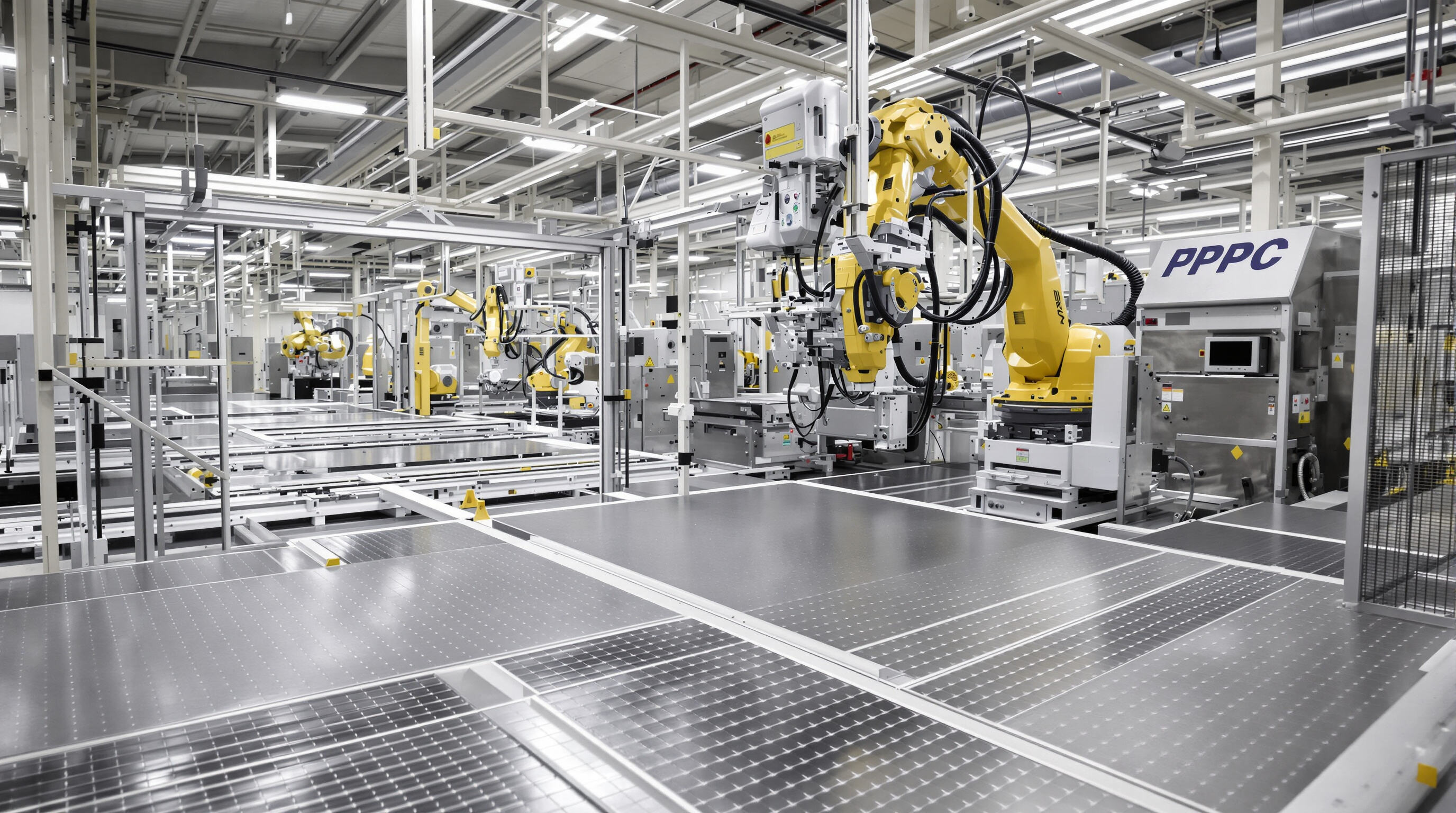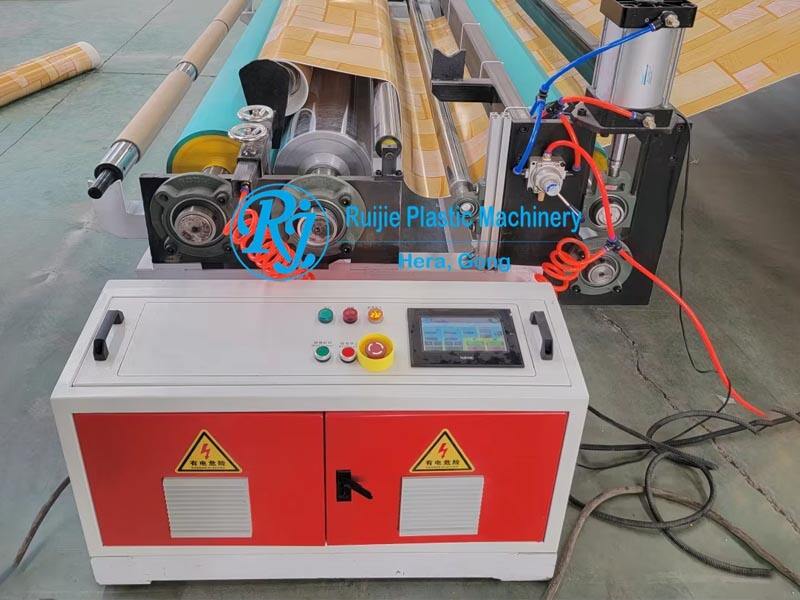Utvecklingen från PVC till SPC-golvmaskiner : En materialrevolution
Förstå övergången från PVC till SPC-golv
Golvbranschen började gå bort från PVC till stenplastkomposit (även kallat SPC) eftersom ingen ville ha golv som bucklade när det blev fuktigt. Under åratal var PVC dominant på vattenbeständiga golvmarknader, men de små expansionsgraderna på 0,12 % orsakade alla slags problem under regnsäsonger eller i badrum. Då kom dessa särskilda SPC-tillverkningsmaskiner som tillät företag att blanda kalksten i kärnmaterialen. Denna enkla förändring minskade problemen med termisk expansion med cirka två tredjedelar samtidigt som vatten helt kunde hållas ute. Fram till 2023 hade de flesta tillverkare redan bytt till att producera SPC istället för traditionella PVC-produkter. Marknaden krävde helt enkelt något som inte skulle vrida eller spricka under normala förhållanden längre.
Hållbarhet, stabilitet och miljöfördelar med SPC
SPC:s överlägsna prestanda kommer från dess mineralrika sammansättning – 70 % kalksten – vilket ger exceptionell styvhet och dimensionell stabilitet. Viktiga förbättringar jämfört med PVC inkluderar:
- Dimensionell stabilitet : 0,04 % termisk expansion jämfört med 0,12 % i PVC (testat vid 40 °C/80 % RF)
- Återvinningsbarhet : 92 % materialåteranvändning i slutna återvinningsystem
- Koldioxidavtryck : 37 % lägre än PVC-alternativ (Ponemon 2023 livscykelanalys)
Dessa egenskaper stöder efterlevnad av LEED v4.1-standarder och gör SPC till ett föredraget val för hållbara byggnadsprojekt.
Konsument- och industrilikt efterfrågan som driver övergången till hårdkärnig golv
Enligt senaste marknadsdata har cirka 42 procent av golvkontraktörerna i USA börjat fokusera på SPC-material eftersom kunder vill ha något som ser ut som trä men inte skadas av vatten (Golvbranschens trenderapport 2023). Tillväxten kommer främst från kommersiella tillämpningar där företag behöver hållbara golv. Ungefär 58 % av alla SPC-installationer sker i lokaler som kontor och butiker eftersom dessa golv kan hålla upp till 25 år även när de utsätts för ständig påfrestning, vilket är ungefär dubbla livslängden jämfört med vanliga PVC-alternativ. Om man tittar på den större bilden så har hållbara kärngolv idag erövrat cirka en tredjedel av den globala marknadsandel, vilket tyder på att traditionella vinylprodukter kan vara på väg att bli föråldrade för många konsumenter och yrkespersoner.
Inuti SPC-golvmaskiner kärnteknik som driver modern produktion

Hur SPC-golvmaskiner möjliggör högeffektiv och precisionsstyrd tillverkning
SPC-maskiner idag kombinerar automatiserad utrustning med mycket noggranna tekniska specifikationer, vilket gör att de kan täcka råvaror på ett optimalt sätt, och servomotorerna håller allt precist med mätningar som är exakta inom plus eller minus 0,1 millimeter. En nyligen genomförd studie av Institute for Sustainable Manufacturing från 2023 stöder detta, och visar hur sådana integrerade tillvägagångssätt gör att fabriker kör smartare samtidigt som de sparar resurser.
Automatisering och system för realtidsstyrning inom tillverkning av SPC-maskiner
SPC-maskiner drivs av PLC-automatiseringssystem med IoT-sensorer som övervakar parametrar som viscositet, temperaturförändringar och trycknivåer på över femtio olika punkter under produktionen. Det slutna återkopplingssystemet säkerställer dimensionell konsekvens på cirka 99,8 % mellan olika batchar. En nyligen genomförd undersökning av golvmaterials kvalitetstrender från branschundersökningen 2024 stöder detta, och visar hur avgörande denna typ av precisionskontroller har blivit för tillverkare som vill behålla sin konkurrenskraft.
Framsteg inom SPC-maskininnovation genom branschledarskap
Ledande tillverkare har börjat utveckla självjusterande verktyg och hybriduppvärmningsteknologier, vilket minskar energiförbrukningen med cirka 40 %. Dessa förbättringar gör att företag kan producera 5 mm tjocka SPC-brädor som förblir vattentäta i 72 timmar i följd och har matchande trästrukturer utan defekter.
Vanliga frågor
Vad är den främsta fördelen med SPC jämfört med traditionell PVC-golvbeläggning?
Den främsta fördelen med SPC-golv jämfört med traditionell PVC-golv är den överlägsna dimensionella stabiliteten med en lägre termisk expansionsgrad på 0,04 % jämfört med PVC:s 0,12 %, vilket minskar risken för krokighet eller sprickor under normala förhållanden.
Varför vänder sig konsumenter och industrier mot SPC-golv?
Övergången till SPC-golv drivs av konsumenternas efterfrågan på golv som liknar trä men är motståndskraftiga mot vattenskador. Dessutom är SPC mycket slitstarkt och lämpligt för kommersiella lokaler med hög trafik, vilket gör det till ett populärt val för företag.
Hur har SPC-tillverkning påverkat miljöhållbarhet?
Övergången till SPC har lett till en betydande minskning av koldioxidavtrycket, cirka 37 % lägre än PVC-alternativ. Dessutom erbjuder det upp till 92 % återanvändning av material i slutna återvinningsystem, vilket är i linje med hållbara byggnadsstandarder som LEED v4.1.
Vilka teknologiska framsteg har förbättrat SPC-tillverkning?
SPC-tillverkningen har sett framsteg såsom höghastighetsblandningsutrustning, IoT-sensorer för realtidsövervakning av produktionen och laserstyrda tvärskärare. Dessa innovationer har gjort produktionen mer effektiv samtidigt som precisionen och kvaliteten på SPC-produkterna har förbättrats.
Vilka är några nyckelfunktioner hos SPC-golv tillverkat med modern teknik?
Modern SPC-golv är känt för sin energieffektivitet, producerar enhetliga, högkvalitativa plattor med exakt tjocklekskontroll, halksäker yta och självjusterande stavar som hanterar termisk expansion, vilket ger förbättrade vattentätningsegenskaper jämfört med konventionella metoder.
Innehållsförteckning
- Utvecklingen från PVC till SPC-golvmaskiner : En materialrevolution
- Inuti SPC-golvmaskiner kärnteknik som driver modern produktion
-
Vanliga frågor
- Vad är den främsta fördelen med SPC jämfört med traditionell PVC-golvbeläggning?
- Varför vänder sig konsumenter och industrier mot SPC-golv?
- Hur har SPC-tillverkning påverkat miljöhållbarhet?
- Vilka teknologiska framsteg har förbättrat SPC-tillverkning?
- Vilka är några nyckelfunktioner hos SPC-golv tillverkat med modern teknik?

